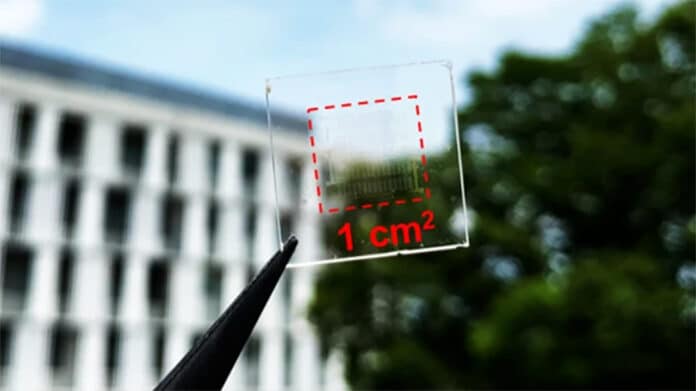
Scientists claim that, in addition to producing solar energy, the plate can be incremented on human skin, in cars and in windows.
Scientists tohoku university disclosed through a article, this week, who have developed a highly transparent solar panel (80% rate, above the organic ones already on the market), which will be used both in cars and on human skin, for the production of solar energy as soon as it is exposed to UV rays. Another place where they can be exposed in the future is on apartment windows. It is extremely thin, with atomic thickness formed with indium tin oxide (ITO), transparent semiconductor widely used in mobile phone and tablet screen.
Until then, according to the researchers, universities had not been able to discover any material that would bring transparency above 70%, such as those already existing on the market.
How do you use it on human skin? Scientists explain!

This was one of the hypotheses raised by the researchers who developed the solar panel since, by adding tungsten oxide to semiconductors, it is possible to create an atomic-thick product that produces energy through exposure to UV rays. Because its thickness is very thin and flexible, it could even be used in the human body.
Xing He argues that the components of this new panel intended for the production of solar energy prevent a drop or variation in energy voltage, which makes its durability greater.
Cell efficiency is XNUMX times greater than a traditional ITO device
The research shows that the way the cells were organized allows the efficiency of the solar panel to be a thousand times greater than the organization of other developments that have ITO in their composition. That is, it is possible to have a more effective and effective use of exposure to the sun's rays.
Another positive aspect is that the current cells are more transparent than the technologies already created, not to mention their thickness, with their atomic formats.
Discovery proves essential after eighth consecutive increase in materials used for the production of traditional solar panels
Polysilicon, the main material used for the production of solar panels, has been facing eighth consecutive increase due to the lack of stocks in the market and the high demand from companies in migrating the energy matrix. With that in mind, the discovery proved to be positive to supply the use of the main raw material and, therefore, make the transition more viable. Polysilicon suffers from its biggest rise in eleven years.
Transparent solar panels were being studied by researchers in the United States so that it would be possible to use them on windows without blocking the entry of light, which could be an alternative to supply the lack of space in apartments to have solar panels. traditional polysilicon photovoltaics. However, this technology is far from reaching Brazil.
An alternative for the production of solar energy without the use of polysilicon is the use of seaweed. In another article published by Click Oil and Gas, we announce that Green Fluidics developed a solar panel with seaweed capable of producing energy when exposed to UV rays while also collecting carbon dioxide from the environment.
In addition to solar panels, scientists from numerous countries, such as Finland, are studying ways to replace lithium batteries in the midst of a shortage in the market. One of the most interesting projects is the sand battery, capable of producing energy for months.
Research Reference
"Article: Fabrication of near-invisible solar cell with monolayer WS2. Authors: Xing He, Yuta Iwamoto, Toshiro Kaneko, Toshiaki Kato. Magazine: Nature Scientific Reports. Vol.: 12, Article number: 11315. DOI: 10.1038/s41598-022-15352-x.”













The car is very beautiful for what…
128 hp, aspirated and cvt. Lame with noise…
I liked
This is a prisoner release, and that's it.
Cade helps RS, for Madono 60…
Even the F15s had a grip on the Gripen…
It’s more of the same VW being VW…
I'm interested